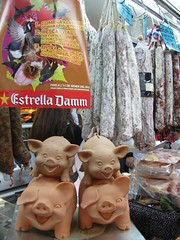OK, so we don’t have the clout or industry standing of The Financial Express, of Tropicana Tower (4th floor), 45, Topkhana Road, GPO Box 2526 Dhaka–1000, Bangladesh. But we have our pride.
So when we saw this paragraph in a major outburst of nationalistic pride concerning Kasalath rice …

Well, we were just a tad peeved.
I went online and fired off a very polite Letter to the Editor.
In your article BD gets IRRI recognition as origin country of rice variety Kasalath you describe the Agricultural Biodiversity Weblog as “an IRRI blog”. As part-owner of that blog, I can assure you this is wrong. Please issue a correction and edit to state “Agricultural Biodiversity Weblog, an independent blog”.
I look forward to your swift response.
Except that online security at The Financial Express leaves a little to be desired. Having told me to type the characters I saw into the box, it failed actually to display any characters. Nothing daunted, I found an actual email for the actual editor, and sent him the same message, with a PS alerting him to the problem with his security.
Back, snappy as anything, came an email, requiring me to reply in order to pass their stringent security checks. I did so. Back came another email, which I reproduce in its entirety.

Since then, not a word. Not one. After two whole weeks, the erroneous statement stands, an affront to our puffed-up sense of self-importance.
What to conclude? It isn’t as if we object to being associated with IRRI, just that, well, we aren’t.
Just as Kasalath isn’t actually a Bangladeshi rice. It’s just a rice that grows on land in that country, and some other countries.



















